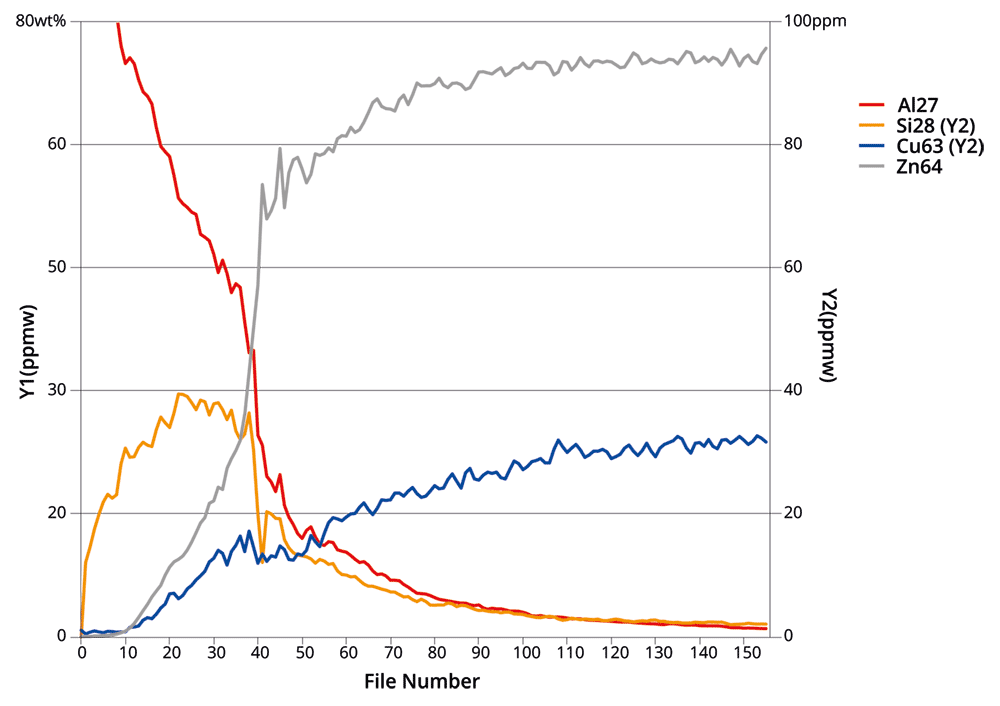GD90 Trace - Time Resolved Analysis
Time Resolved Analysis (TRA) or Depth Dependent Analysis involves sputtering through different matrix layers in a composite material to gain elemental data for both the matrix and trace components. By means of a flat geometry GD source configuration, the GD90 Trace is an excellent candidate for depth profiling, surface analysis and failure analysis.

By measuring the crater with a profilometer, the depth can be entered into the
software to evaluate elements according to position in the layers
Due to the low-flow GD source, at normal analytical conditions the sputter rate ranges from ∼160 nm/minute for conductive materials to ∼80nm/minute for non-conductive materials (10mm ø sputter crater). If operational conditions are lowered, the sputter rate can be slowed by >5x. Optimum depth for the GD90 is between 0.1 – 10µm, but the range can be increased or decreased by raising or lowering conditions making the GD90 a useful tool for analysing thin films/coatings and composite materials, including nanocomposites.
See our GDMS and GD90 Trace Applications pages for more information.

Typical spectra showing the top layer of a composite being sputtered away and the lower layer being sputtered into. Additionally, contaminants can be seen trending along with the corresponding layers.


 Follow us
Follow us 